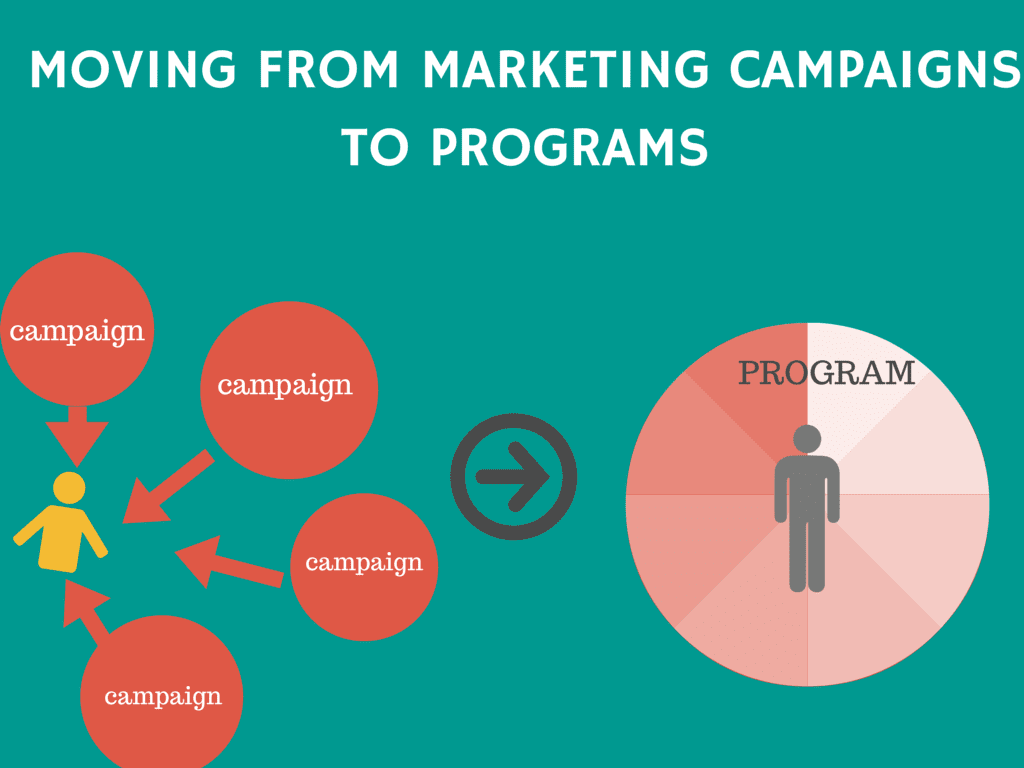A day in the life of a B2B marketer revolves around the development and delivery of marketing campaigns, from creating the concept, developing the content, and segmenting the list to launching the campaign and reporting results.
All of this investment, time, and effort…and then what? The entire cycle begins again. And so goes the day-in, day-out routine of a typical B2B marketer.
In a recent demand generation survey conducted by ANNUITAS, more than 60% of respondents stated they conduct more than 15 campaigns on an annual basis—more than one campaign per month!
Only 2.8% of marketers surveyed rate themselves as highly effective at demand generation.
And what is the result of this approach? According to the same study, only 2.8% of marketers rate themselves as highly effective at demand generation. This is an issue.
Programs vs. Campaigns
One of the ways marketers can begin to reverse this trend is by moving from a campaign-focused approach to a programmatic approach. What’s the difference?
A campaign is typically focused on an event or a particular asset. Think about how organizations approach a new analyst report to which a vendor has purchased distribution rights. A few emails go to the targets in the database, driving to a corresponding landing page and web form. In addition, the report is posted on the website for download. Those who respond by downloading are marked and scored. Those that do not respond are pushed into another campaign. So the cycle goes.
A programmatic approach does not start with the asset or tactic in mind. Rather, a programmatic approach is first built to be perpetual, always on. This more closely aligns with how buyers buy—in a perpetual fashion—rather than a pre-defined period. A program also focuses on engaging, nurturing, and converting buyers with relevant content that aligns to their needs and buying process. This is in stark contrast to a one-and-done campaign. Lastly, programs are continually optimized by analyzing Key Performance Indicators (KPIS) and using the business intelligence that is derived to make mid-course adjustments that will improve the program’s overall performance.
If marketers truly want to improve the results they are getting from their campaigns and increase their effectiveness, then stop using isolated campaigns, which have no continuity, and build programs that are perpetual. Instead, think about taking a new approach and designing holistic programs that align to your buyers and their purchase path.
Streamline Your Marketing Strategy
Want only the essentials of a best-in-class content marketing campaign? Follow these simplified guidelines to create a marketing strategy that works for your brand.


